A glossary of terms from Scott McCloud’s Understanding Comics.
#
- 6 Steps:
My Definition: “the process that every work, no matter the medium, will always take”
1. Idea: the content, including impulses, ideas, emotions, purposes
2. Form: the medium/form the work will take (ex. book, painting, movie)
3. Idiom: genre, style, subject matter
4. Structure: the composition/arrangement; how parts of the work are put together and arranged; including what to include and what not to include
5. Craft: actual construction of the work, getting the job done
6. Surface: finishing touches; often what catches the eye first and what people appreciate most easily (superficial); surface alone can not carry a work
A-G:
- Art:
My Definition: “a way people have used to become more than species who only survive and reproduce; a way to express individualism that has nothing to do with being alive in a physical sense”- Pure Art:
My Definition: “What is the purpose? What do you want from art?”
- Pure Art:
- Bleeding:
My Definition: “when the panel runs off the page”; does not contain time because it escapes off the page, setting the mood (popular in manga)
- Cartoon:
My Definition: “single panel pictures that focus on specific details or ideas”; different from comics as they are a single panel even if they may use a comic style; a form of amplification through simplification where this way of seeing can be used in storytelling
- Closure:
My Definition: “observing the parts, but seeing the whole”; used in comics where it is an agent of change, time, and motion, and the audience is involved and working with the creator; allows us to connect comic panels’ moments and mentally construct a continuous, unified reality; if visual iconography = vocabulary, closure = grammar
- Comics:
Scott McCloud: “a juxtaposed pictorial and other images in deliberate sequence, intended to convey information and/or to produce an aesthetic response in viewers”
My Definition: “pictures placed side by side in a specific order to tell a story or invoke a response in viewers”; comics sometimes have a political motive while others just want to share a story/information, but in essence, they are a form of communication
- Gutter:
My Definition: “space between panels”; where the magic that makes up comics is; works with closure to create separate moments (panels separated by gutters) that are perceived as one continuous flow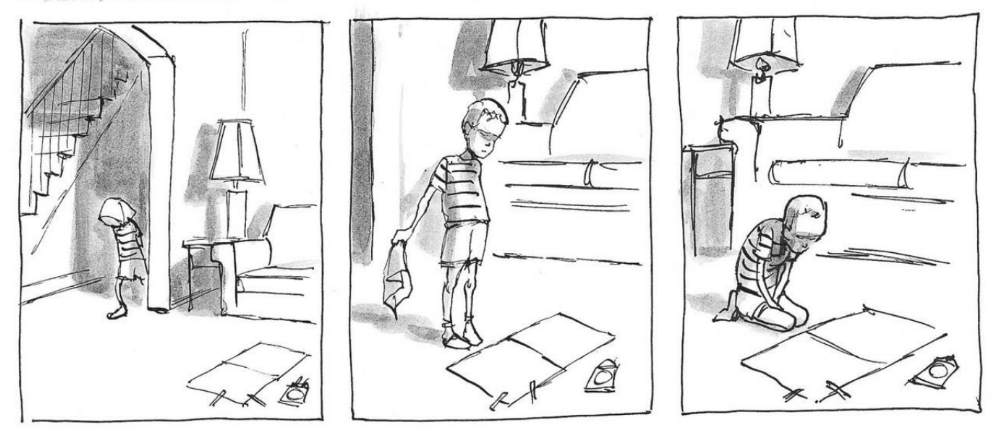
H-M:
- Icon:
My Definition: “an image used to represent a person, place, thing, or idea”; a drawing of a smiley face is an icon used to represent a face/happiness; with non-pictorial icons, the meaning is fixed and appearance doesn’t affect meaning because it represents invisible ideas (ex. M or 5 in bubble letters or blocky letters still has same meaning)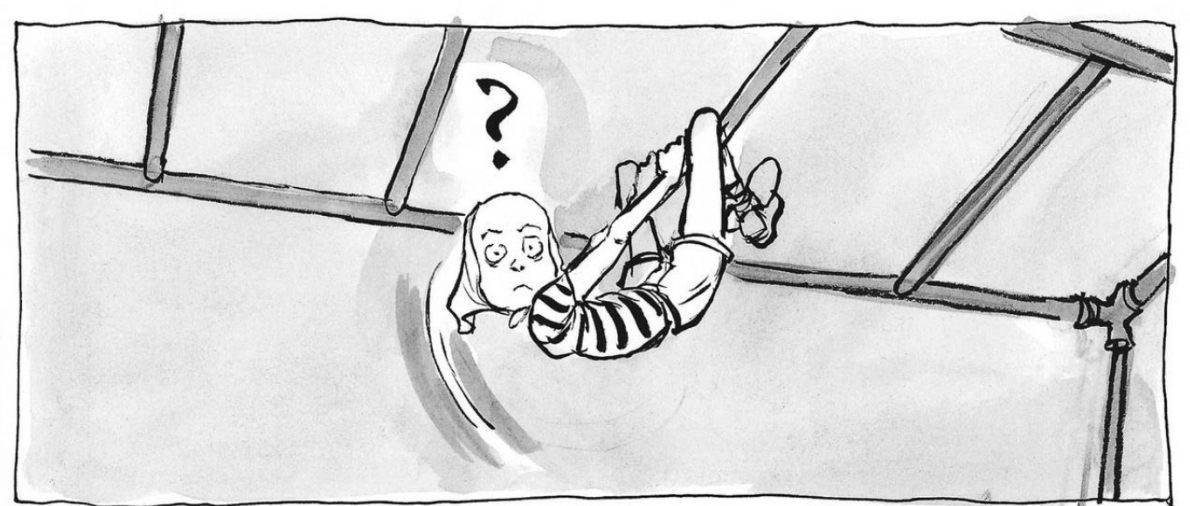
- Medium:
My Definition: “serves as a bridge between two people’s mind; one person will take their thoughts and put it into a form (medium) that can physically travel through the world and be converted by another person’s senses into thoughts”
- Motion:
My Definition: “found in comics as panel-to-panel closure, motion within panels”; interaction of time and comics can lead to motion; motion line called the “zip ribbon”
N-Z:
- Panel:
My Definition: “usually is what shows time or space being divided into different parts”; overlooked as comics’ most important icon; holds all vocabulary of comics; panels shapes vary but don’t change specific “meanings” of panels, rather they affect reader experience; can control time through content of panel, number of panels, or panel shape
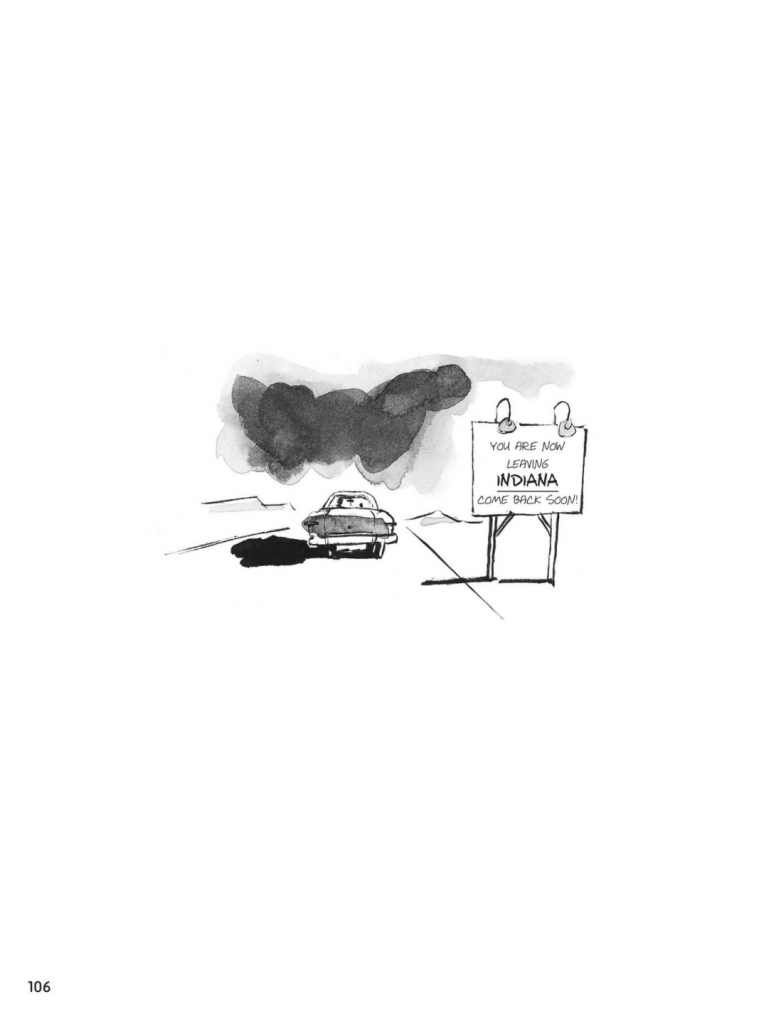
- Panel-to-Panel Transitions:
My Definition: “how panels transition from each other”
Types:
1. Moment-to-moment: very little closure
2. Action-to-action: 1 subject, action progression
3. Subject-to-subject: stays within scene or idea, requires reader’s involvement
4. Scene-to-scene: requires deductive reasoning as there are significant distances in time and space
5. Aspect-to-aspect: wandering eye on different aspects of a place, mood, or idea
6. Non-sequitor: no logical relationship between panels
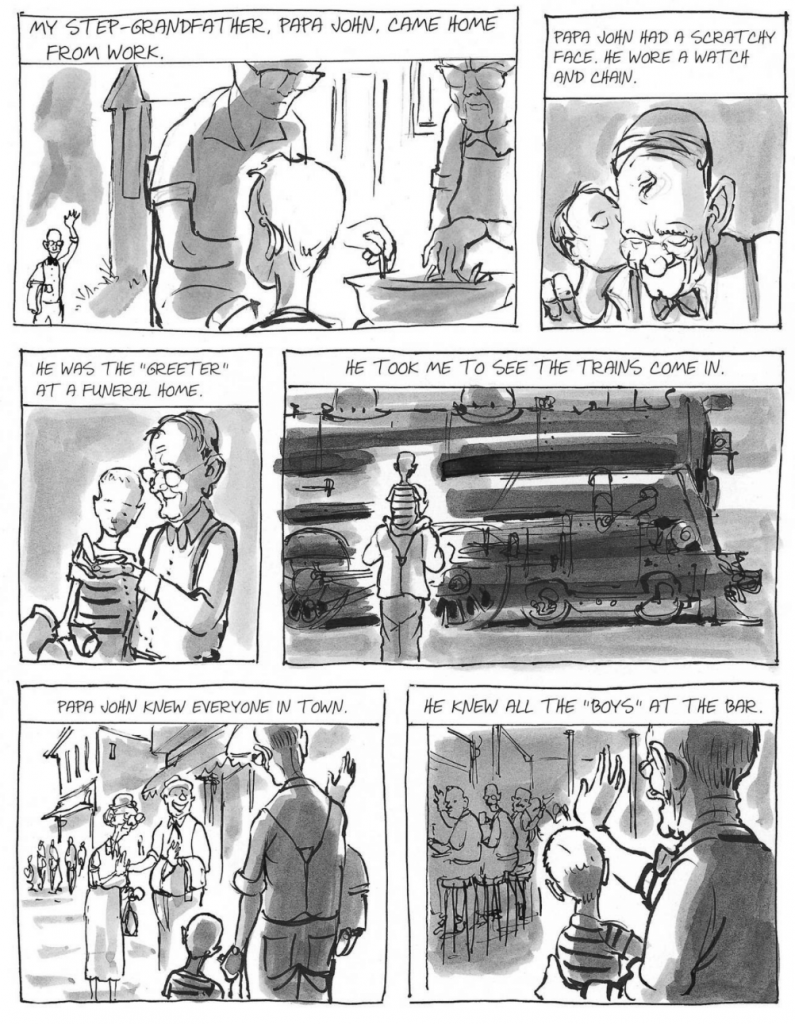
- Picture:
My Definition: “image is drawn to actually look like the subject”; sometimes the meaning is fluid and variable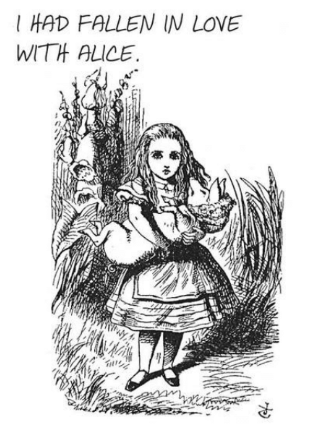
- Show and Tell:
My Definition: “using combined words and pictures to communicate an idea or message”
Types:
1. Word-specific: pictures illustrate, but don’t add significant importance to idea
2. Picture-specific: words don’t add significant importance to visual sequence
3. Duo-specific: Words and pictures both send basically same message
4. Additive Combination: Words amplify or elaborate images and vice versa
5. Parallel Combination: Words and pictures follow different paths without intersecting/overlapping; each tells a different part of the story
6. Montage: Words are integral part of the pictures
7. Interdependent: Words and pictures work together to convey the idea; neither can do it on their own; the most common way of show and tell

- Sound:
My Definition: “found in comics as speech bubbles, narration boxes, sound effects”; interaction of time and comics can lead to sound; duration of a panel is based on nature of sound, action, and reaction to it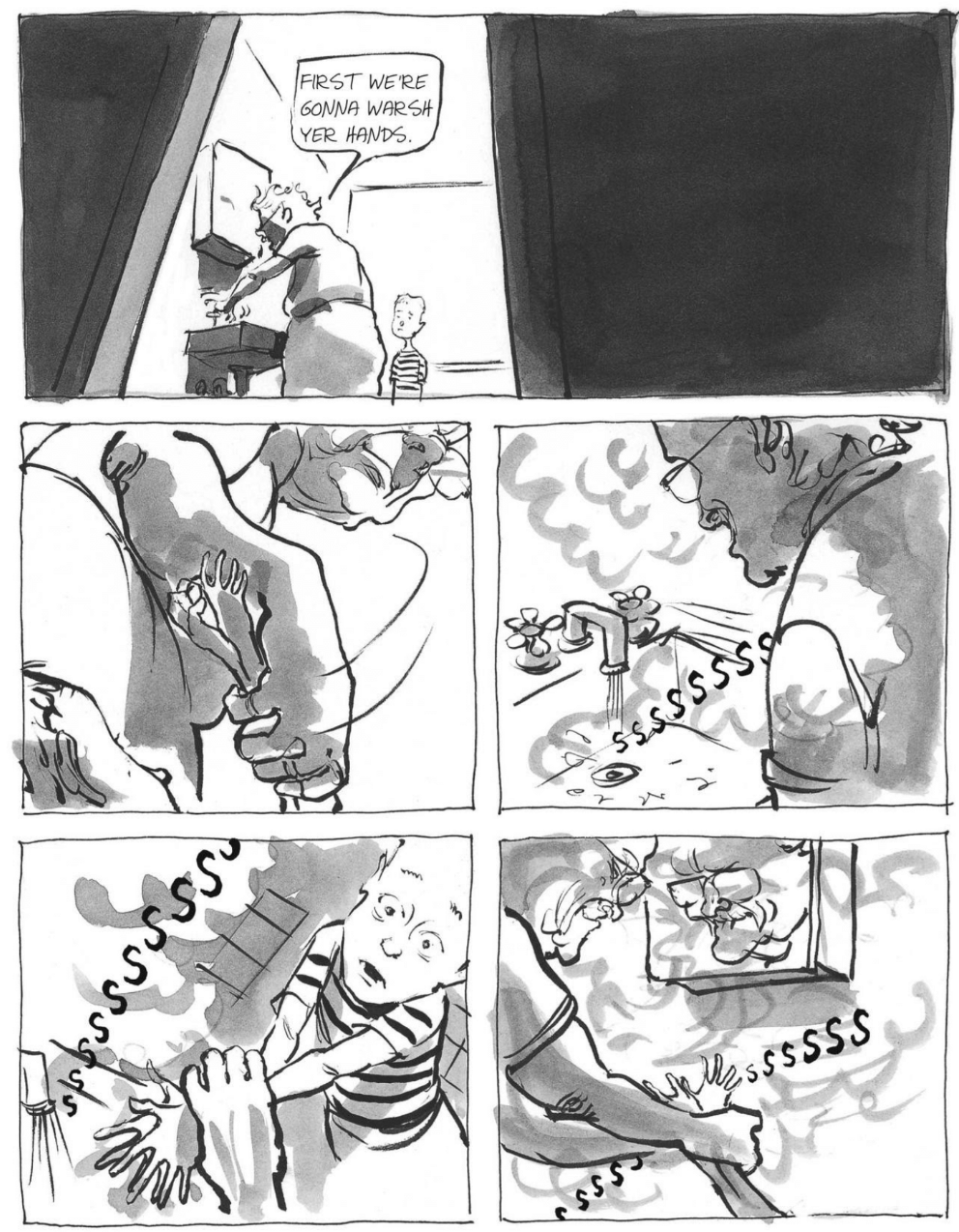
- Symbol:
My Definition: “a category of icons, such as concepts, ideas, and philosophies”
- Synaesthetic:
My Definition: “idea of uniting different artforms to appeal to different senses”; trying to unite the five senses under one artform
